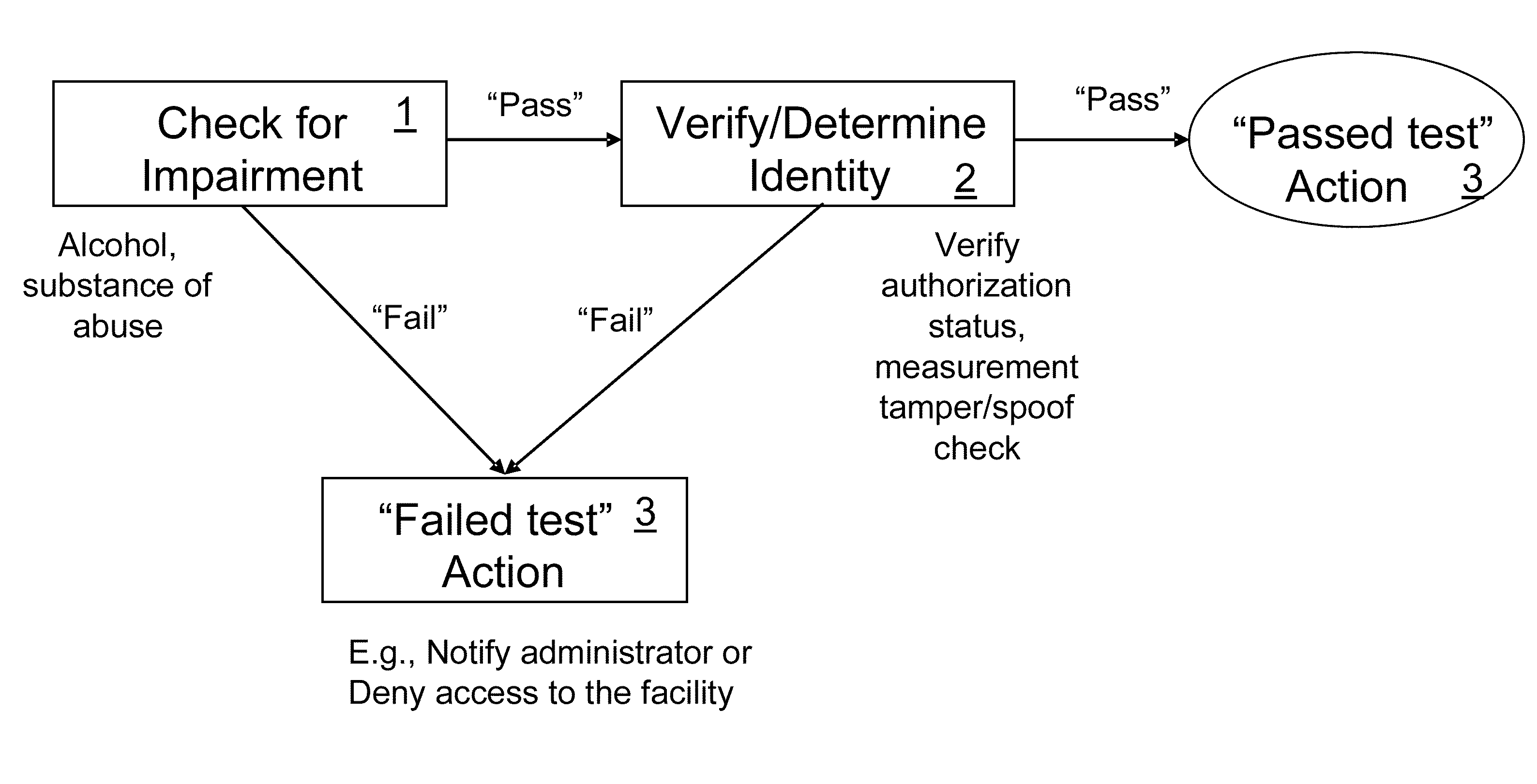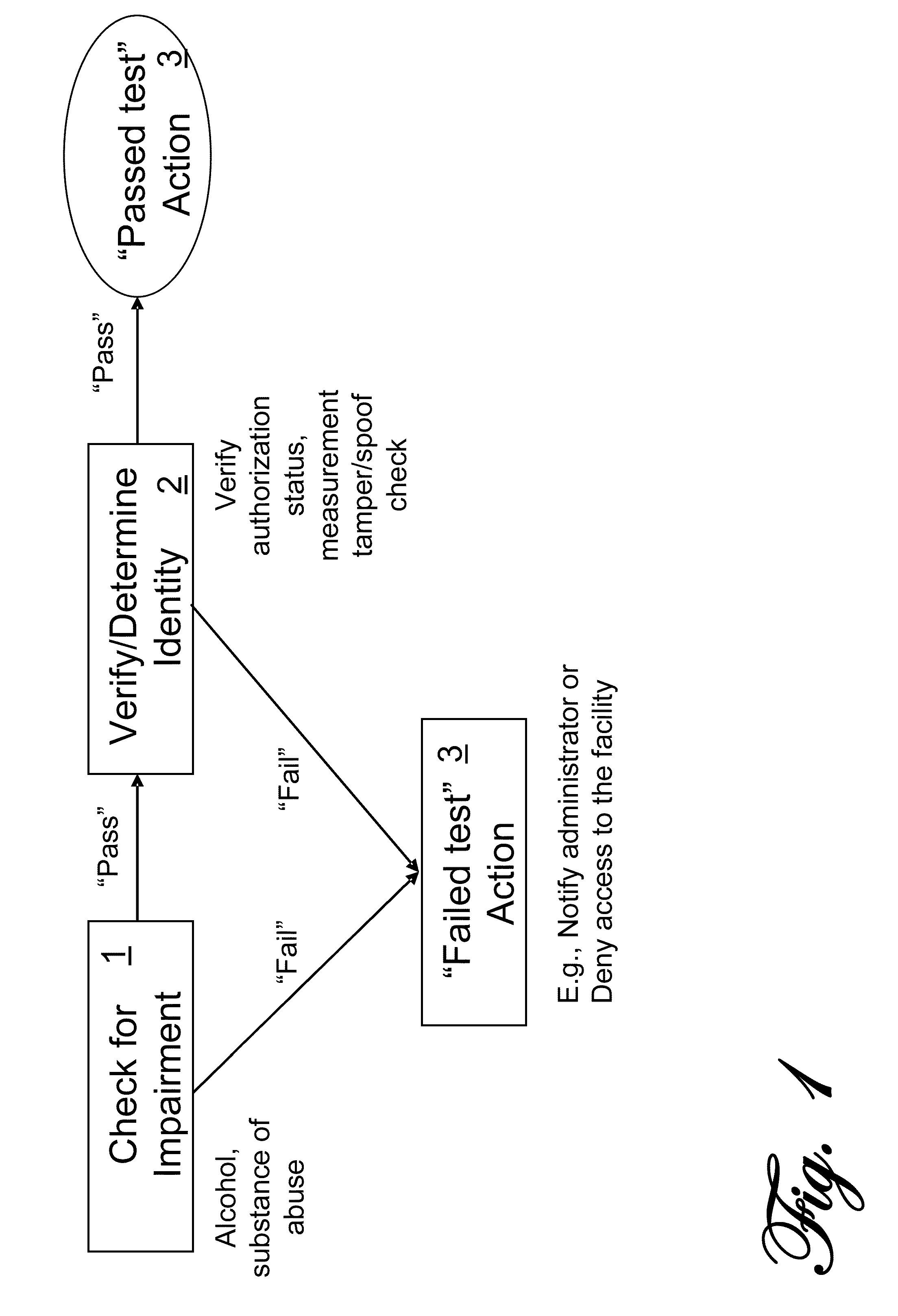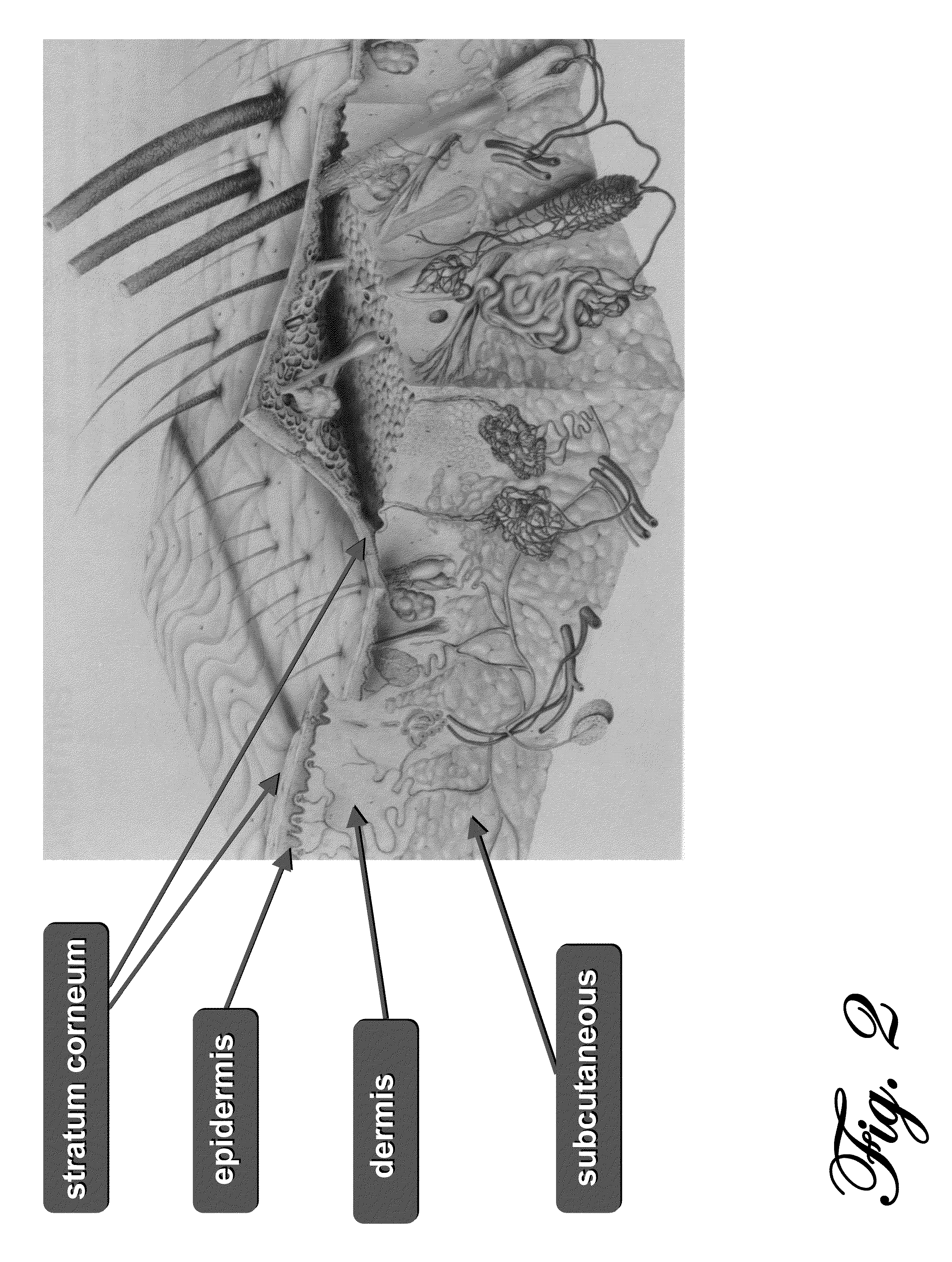System for Noninvasive Determination of Analytes in Tissue
a tissue analyte and non-invasive technology, applied in the field of quantitative spectroscopy system, can solve the problems of difficult reliable analyte measurements, difficult use of the mid-infrared region, and inability to fully absorb virtually all light introduced to the sample being measured, etc., and achieve the effect of expanding spectroscopic measurements and avoiding inconvenient spectral complexity
- Summary
- Abstract
- Description
- Claims
- Application Information
AI Technical Summary
Benefits of technology
Problems solved by technology
Method used
Image
Examples
example embodiments
Description of Example Embodiments
[0184]In an example embodiment of the present invention (schematically depicted in FIG. 33), a noninvasive alcohol measurement system is comprised of 13 VCSEL's that are used to measure 22 discrete wavelengths. Table 1 shows a list of each VCSEL and the associated target peak wavelengths that can be interrogated during the course of the measurement. In this embodiment, each VCSEL is stabilized to a constant temperature. The peak wavelength of each VCSEL is controlled based on the circuit shown in FIG. 34 (each VCSEL having its own circuit), which also enables the VCSEL to be turned On and Off. The specific state (On / Off) of each VCSEL at a given time during a measurement is determined by a predetermined Hadamard matrix. In example embodiments incorporating solid state light sources the Hadamard matrix is a pattern of On / Off states versus time for each VCSEL that is stored in software rather than a physical mask or chopper. This allows the On / Off sta...
PUM
 Login to View More
Login to View More Abstract
Description
Claims
Application Information
 Login to View More
Login to View More - R&D
- Intellectual Property
- Life Sciences
- Materials
- Tech Scout
- Unparalleled Data Quality
- Higher Quality Content
- 60% Fewer Hallucinations
Browse by: Latest US Patents, China's latest patents, Technical Efficacy Thesaurus, Application Domain, Technology Topic, Popular Technical Reports.
© 2025 PatSnap. All rights reserved.Legal|Privacy policy|Modern Slavery Act Transparency Statement|Sitemap|About US| Contact US: help@patsnap.com



